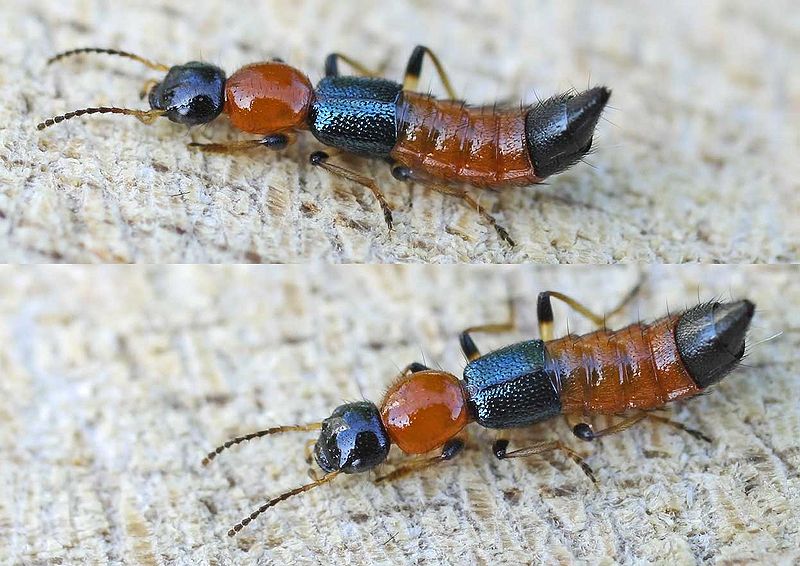
Collecting Live Food for Reptiles and Amphibians: an Entomologist’s Technique
by Frank IndiviglioWild-caught insects and other invertebrates are valuable, and often essential, additions to the diets of many captive reptiles and amphibians. During the warmer months, I have utilized them for 50-100% of the diets of many animals in my own collection, and for those under my care in zoos.
Beating the Bushes for Insects
 One of the simplest and most effective collecting techniques was developed by entomologists (insect scientists) who needed to sample large habitats quickly. Here it is: a white, un-patterned sheet is spread below a bush or tree, and the foliage is then beaten with a stick. That’s it!
One of the simplest and most effective collecting techniques was developed by entomologists (insect scientists) who needed to sample large habitats quickly. Here it is: a white, un-patterned sheet is spread below a bush or tree, and the foliage is then beaten with a stick. That’s it!
An incredible assortment of caterpillars, beetles, ants, tree crickets, katydids, spiders and other tasty morsels will rain down upon the sheet, where they can be easily collected. The majority will be arboreal species – healthful additions to the diets of tree frogs, flying geckos, smooth green snakes and other tree-dwelling creatures, and to all other insectivorous herps.
Identifying Potentially Troublesome Species
 Do not collect fireflies, “hairy” or "tent"caterpillars (please see photo), and brightly colored insects that you cannot identify (due to possible toxicity). Unless you are well-acquainted with local spiders, it is best to avoid them as well…harvestmen, or “daddy long-legs”, however, are harmless.
Do not collect fireflies, “hairy” or "tent"caterpillars (please see photo), and brightly colored insects that you cannot identify (due to possible toxicity). Unless you are well-acquainted with local spiders, it is best to avoid them as well…harvestmen, or “daddy long-legs”, however, are harmless.
Use our stainless steel tongs to handle any specimens that may bite or sting. A Peterson or Audubon Society field guide will help you to learn about the innumerable interesting creatures that you will encounter.
A World of Possibilities
You’ll have quite a selection to choose from, wherever you live. Over 2,000 types of insects live right within New York City, and it is estimated that 30 million species inhabit the planet. A single tree in Panama has yielded 130 species of beetle, 100 of which were new to science!
Insect Traps and Canned Insects
Pitfall traps are another way of trapping insects, see article below. An alternative means of introducing variety to your pets’ diets is through the use of canned invertebrates.
Collecting Live Food for Amphibians and Reptiles: Pitfall Traps
Hello, Frank Indiviglio here. Prehistoric cave paintings show that the pitfall trap, a simple covered or uncovered hole designed to capture animals, came into being very early in our evolution as a species. Indeed, they are still used by hunters and field researchers today. Pitfall traps also provide pet keepers with a simple, effective means of collecting live food for reptiles, amphibians, tarantulas, scorpions, mantids and other terrarium animals.
Building and Baiting the Trap
 To create a pitfall trap, simple bury a can or jar flush with the ground and cover it with a board that is slightly elevated by small stones. This will keep rain out while allowing invertebrates to enter.
To create a pitfall trap, simple bury a can or jar flush with the ground and cover it with a board that is slightly elevated by small stones. This will keep rain out while allowing invertebrates to enter.
An amazing assortment of creatures will simply stumble into such a trap, but you can increase its effectiveness by adding bait. A bit of ripe fruit, molasses, honey and some tropical fish flakes will lure all sorts of insects, sow bugs and other invertebrates (snails and slugs are especially fond of beer). Be sure to keep some dead leaves or paper towels in the trap as well, to provide places for your catch to hide and keep away from one another.
Boards or other cover spread about an area, which can be easily turned and checked, will also attract a variety of insects. Spraying the area with a hose during dry weather will attract increased numbers of invertebrates to these shelters.
Cautions
Always use caution when examining your catch, as potentially dangerous spiders, scorpions, hornets and other such creatures may be present. Have a good field guide on hand if you are unfamiliar with local species, and use feeding tongs to remove animals from the trap.
Native Beetles in the Terrarium
If your interests extend to native invertebrates, your trap will likely provide you with some pleasant surprises.
One of my favorite and rather frequent catches is the caterpillar hunter (Calosoma scrutator), a widespread beetle that feeds upon caterpillars and other soft-bodied insects (a relative, the forest caterpillar hunter, was imported to the USA from Europe in 1905 to battle gypsy moths).
For more great articles visit our Reptile Education Center







